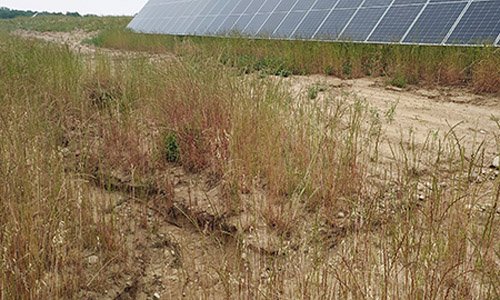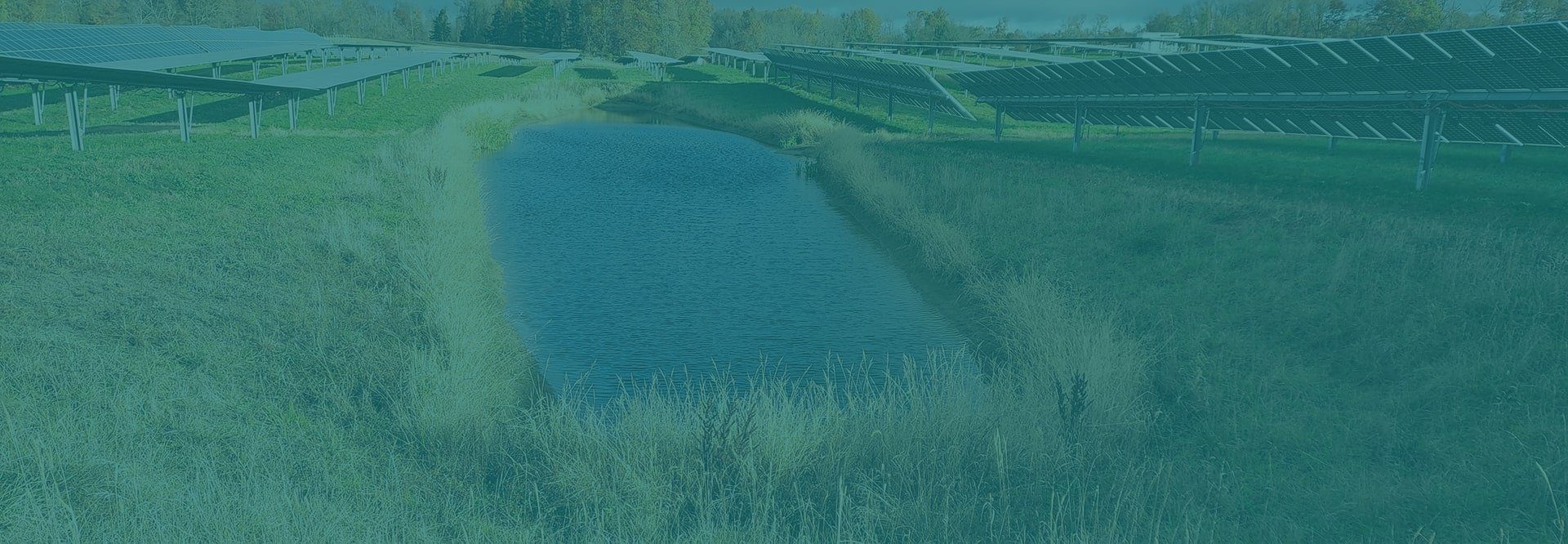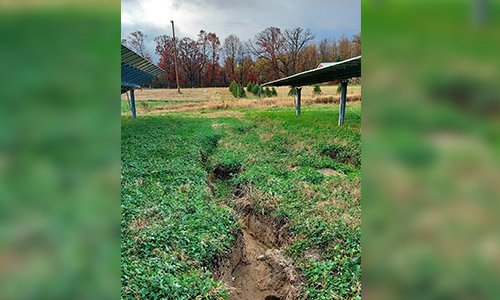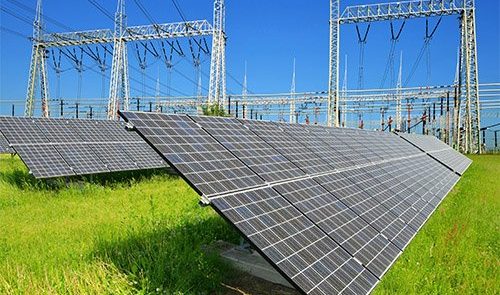Guiding Local Agencies Through Responsible Solar Energy Infrastructure Development
CEI has the technical expertise to help local government agencies manage the impacts of solar development responsibly. While state law provides some guidance, it often does not go far enough—especially in addressing long-term stormwater management. The existing Soil Erosion and Sedimentation Control (SESC) permit process focuses only on temporary construction impacts. However, changes in topography and post-construction stormwater flows require a much more detailed, site-specific engineering review. These reviews should be based on the stormwater standards of your jurisdiction, and importantly, the cost of this review can and should be reimbursed by the developer—not borne by the local government agency or its taxpayers.
Panel Drip-Line Erosion/Ponding
Puddles forming beneath solar arrays due to concentrated runoff, often from panel drip lines. This illustrates how improper grading can lead to localized erosion or pooling.

Channelized Flows and Soil Washing
Stormwater runoff scours soil causing erosion and sedimentation downstream.
Muddy Flooding on Adjacent Farmland or Wetlands
A muddy expanse of floodwater where solar site drainage saturates nearby ecosystems or access roads.

Supporting Local Agencies from Start to Finish
CEI works directly with local government agencies, drain commissioners, boards, planners, and legal teams to support:
- Zoning ordinance development for utility-scale solar
- Special use permit evaluations
- Developer agreements that protect township interests
- Engineering reviews for drainage, site design, and post-construction conditions
Involving CEI early in the process—before permits are issued or agreements signed—ensures a more efficient, protective, and cost-effective approach.





